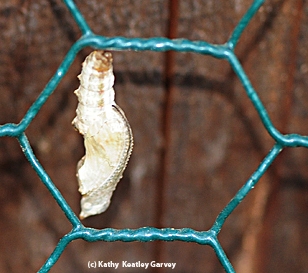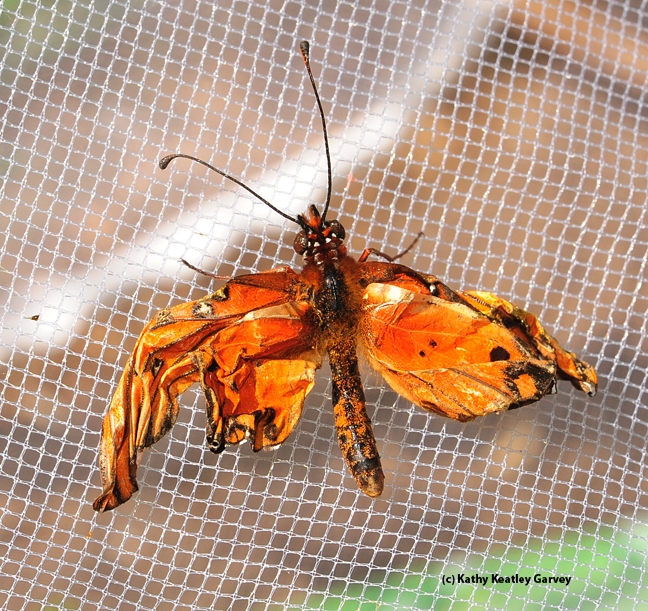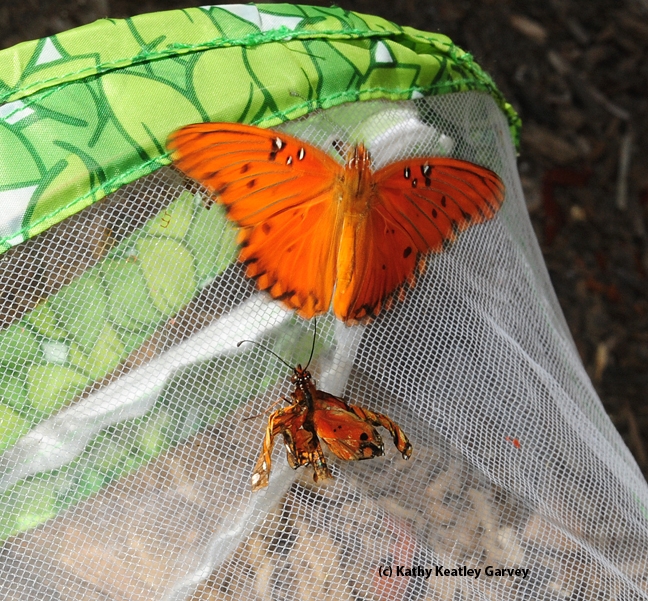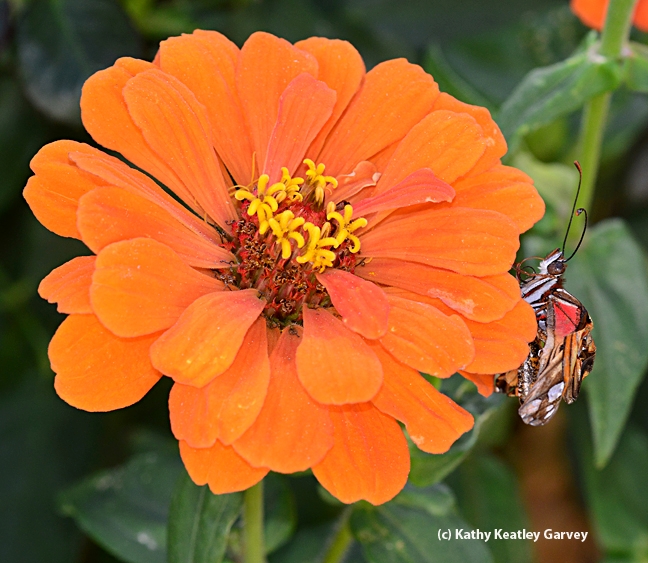
Mother Nature isn't, either.
For several weeks, we've been rearing Gulf Fritilliary butterflies (Agraulis vanillae). We purchased a butterfly habitat from the Bohart Museum of Entomology at UC Davis, salvaged some caterpillars from our passionflower vines (Passiflora), and watched the transformation from caterpillars to chrysalids to butterflies.
One butterfly, however, emerged last weekend with crippled wings.
You may have seen crippled butterflies, too.
A reader who lives in Rancho Cordova said she's nurtured passion flower vines (the larval host plant of the Gulf Frits) for the past seven years and has "spotted or or two butterflies a year in the yard."
"In the past two weeks we suddenly have dozens and dozens of chrsalids," she wrote, adding "I'm not sure what their odds of survival are but I have picked up about 15 off the ground who were never able to fly. I tried giving them some sugar water on a q-tip and about four regained strength and were able to fly away but the others have died."
"Do you have any tips on helping our friends?" she asked. She also wanted to know the life span of a butterfly.
We asked noted butterfly expert Art Shapiro, distinguished professor of entomology and evolution at UC Davis, to answer the questions.
"It's highly abnormal that any significant proportion of Gulf Frits would be unable to fly," Shapiro said."If the pupae are not disturbed they hang vertically. The butterfly pops out and hangs on the bottom of the cast pupal skin, letting gravity pull down the wings so they elongate fully. If the bug is knocked down while the wings are soft and cannot immediately climb up a vertical surface, it will end up a cripple. The pupae should never be removed from their substrate and laid horizontally in a container. That virtually guarantees crippling. If there was no disturbance and all those animals fell down spontaneously, they are infected with some microorganism that has significantly weakened them."
"Any butterfly that is unable to fly is a lost cause and there is really no reason to try to save them since they won't reproduce. If a crippled female was mated by a flying male, which is possible, she wouldn't be able to lay her normal complement of eggs on the host plant anyway."
Shapiro, who monitors the butterfly population in the Central Valley of California and posts information on his website, says that "adult Gulf Frits, which are pretty unpalatable to predators--they have chemical defenses-- are quite long-lived. In warm weather they can live 4-6 weeks. In cold weather they can live 2-3 months, but are killed outright at 21-22F."
"For the record, butterflies have sugar receptors on their feet. When their feet contact sugar, the proboscis uncoils automatically for feeding. If it's necessary to feed a butterfly, place watered-down honey--not much--or Pepsi or Coke right out of the container--on a fairly non-absorbent surface--I use a strip of foam rubber--and, using forceps to hold the wings over the back, lower the feet to the liquid. Bingo! Allow to feed ad lib."
As for the crippled butterfly we reared, we released it in our backyard. It encountered a possible mate, which checked it out and took off.
Then we placed it on an orange zinnia where it clung tightly to the blossom. A short life, true, but at least a taste of nectar and a little sunshine.
Mother Nature isn't perfect, and neither are we.
Attached Images:


